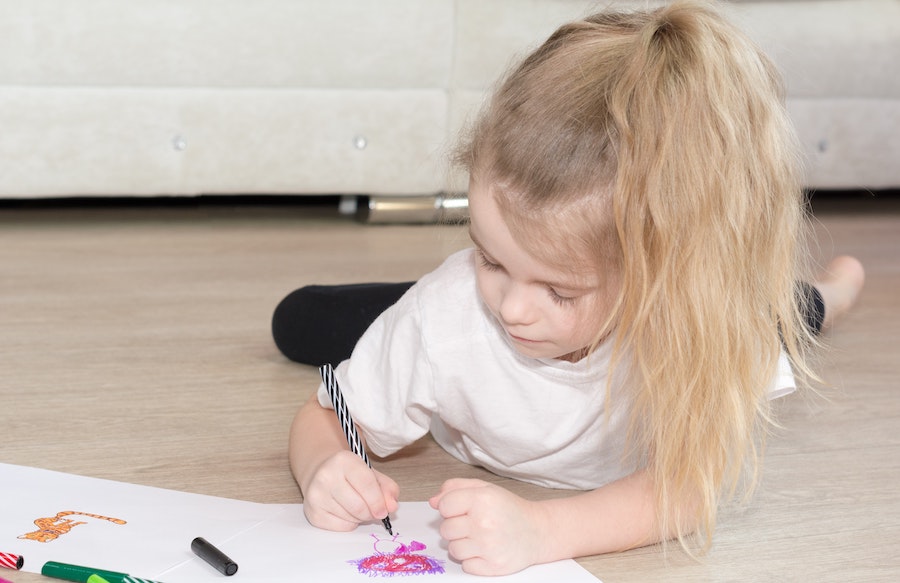If one thing has become abundantly clear over the past few years, our kids are growing up seeing all kinds of problems we face in the world, and they’re increasingly asking us what they can do, or how they can be part of the solution. That’s pretty awesome. And what’s even better than giving kids the answers is raising them to be the kinds of young adults who can find the answers for themselves.
One important place to start is with critical thinking.
In an era of information overload, and competing news agendas – both online and offline, we know how important it is to raise our kids to be smart, savvy, critical thinkers. We want them to be curious, to ask questions, and to evaluate the opinions they see and hear.
Critical thinking skills are really the groundwork for so much of life, let alone an essential part of many careers, whether kids want to be entrepreneurs, technologists, social change agents, or just better citizens of the world, it all requires good critical thinking skills.
So we’re bringing back the post as part of our 3-part life skills series that we know help our own kids.
Find expert tips in the 3 articles in our series, updated for 2023
Top image: Tachina Lee
6 tips for raising critical thinkers
1. Know what critical thinking means.
The dictionary describes critical thinking as “the objective analysis and evaluation of an issue in order to form a judgment.” But that’s kind of dry, huh.
There is actually a non-profit organization called the Foundation For Critical Thinking (news to us too) and they describe it as a way of thinking about any subject, content or problem in which the thinker improves the quality of their thinking by imposing intellectual standards on them. Then, once you’ve processed information thoughtfully, you can use that skill to both communicate better and to guide your beliefs and behaviors.
Critical thinking leads to other important traits like open-mindedness, discernment, reason, flexibility, social consciousness, the ability to respond to complex problems, and the difficult ability to self-correct, all of which are arguably excellent traits to have at any age.

We’re big fans of the book Seema Yasmin’s book, “What the Fact?!”, a hand book for kids to learn critical thinking skills and “BS-proof their brains.” Liz’s podcast interview with her is a terrific listen for parents, whatever age your kids may be.
2. Start young
Critical thinking isn’t just for high schoolers diving into Socratic method in a philosophy class. Children as young as preschool can easily dive in with your help. Bright Horizons offers a helpful resource page in teaching young children critical thinking skills and help them learn to problem-solve on their own.

Photo: Michael Berdyugin
One of the easiest ways to teach this is through play. This is where kids learn cause and effect, and can experiment with actions to see if they generate different or similar reactions by changing variables.
In non-scientific speak, that means kids asking themselves questions like, “if I swing really high can I flip over the top bar?” Or “if I mix all these colors together, what will I get?”
3. Give kids opportunities to solve problems on their own.
At any age, we’re often so fast to jump in and solve problems for our kids, instead of letting them figure things out. In fact, it’s a habit parents tend to start when our kids are young — generally because we need to, or we want to keep our kids safe — but then we forget to ease up as they get older. Step back a little and let them problem-solve. Even if they get things wrong, it’s something they will learn from.
You can also help kids work through problems by asking questions. Like “what are some of the options you have?” Or ask them to make a logical leap to think about some of the possible outcomes before they act. What are the pros and cons? Any unintended consequences you can anticipate?
4. Ask “how” and “why” questions
Mary Halton’s article on Ted.com about raising critical thinkers, with quotes from educator Brian Oshiro is absolutely terrific. She uses the example that in schools, teachers often ask questions like, “what are the main causes of climate change?” at which point kids head right to the Google and grab the first possible answer. This makes them feel like they understand a topic, but as she puts it, “their knowledge is superficial.”
 Photo: Markus Spiske via Unsplash
Photo: Markus Spiske via Unsplash
To help develop your kids’ critical thinking skills, it’s better to try questions like Why should we worry about climate change? How will it impact where we live? How will it impact people with money versus people who are struggling? Why do people think it’s so urgent to make changes now instead of later?
The why and how questions force kids to think through answers critically, instead of just regurgitating facts.
And just to push them further…Oshiro suggests we follow up their answers with “how do you know this?” which gets kids in the habit of supporting their arguments with facts — from reputable sources, of course.
5. Ask how other people may come to different conclusions.
If your kids have decided that “Halloween is the best holiday” (ahem, my kids) and there’s no discussing any other possibilities, ask them to try to think through why other people might come to a different conclusion.
Or, try it with favorite school subjects. Try it with political or cultural issues. Try it with sports team alliances. Try it with nearly any topic your kids care about.
It’s amazing how fast this exercise can open kids’ minds to seeing things through different lenses. That in itself can be an eye-opening exploration of biases, prejudices, dogma, ethics, values, cultural differences, and more.
When kids are able to see things through others’ eyes, it doesn’t mean they’ll necessarily change their opinions (though they may) or come to agree with “the other side.” But it does help them to more firmly grasp where other people are coming from, which then allows them to better formulate their own reasoning, rationales, and arguments.
In other words, critical thinking.
6. Ask them to think backwards
Children are often taught that scientists always start with a “what if…” question, which is a terrific way to teach kids to think about thinking critically through problem-solving. But there’s another exercise I love even more: thinking backwards.
One of the greatest tips I ever learned when studying communication in school, was to look at a movie, a book, or even a short commercial, then to work your way backwards and try to figure out how someone came up with it in the first place. If you have teens old enough for Black Mirror, that’s a great jumping off point. “Wait…they were probably thinking about websites that rank businesses or teachers, then wondered what would happen if people were ranked the same way, and then, what if the people who had higher rankings ended up getting more special treatment in life…” (That’s the Nosedive episode by the way, S3E1.)

You can do the same thing with nearly any finished product. Take a winning science fair experiment, for example. Have your kid examine it, the work backwards to figure out what the creator was thinking when they created their hypotheses. Or they can look at a favorite app and think about what problem it solves and how the developers might have gotten there. In fact, scroll to the bottom of the Global Problem Solvers teacher resource page for some compelling, short video interviews with real teen/young adult inventors and social entrepreneurs that are pretty incredible. (Above: A student team from Phoenix who developed a device designed to eliminate DUI accidents.)
Big problems and big solutions become so much less mysterious when broken down into smaller components. This way, kids can start to see how to think about problem-solving, and not just thinking about the problem.



